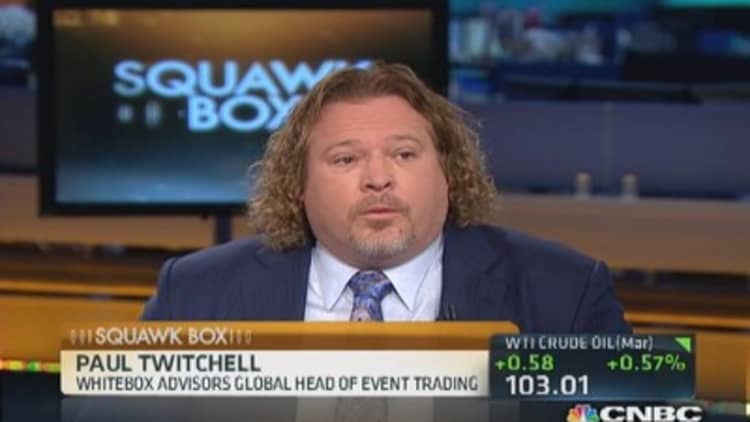The $3.7 trillion U.S. municipal bond market has been stunned by what would have been unthinkable a few months ago: Puerto Rico debt is rallying.
Credit spreads on the troubled territory's bonds are shrinking. Yields on its general obligation bonds in the secondary market are falling. And all this is happening against the backdrop of events that should make the bonds radioactive to buyers. Most notably, the three rating agencies cut Puerto Rico's credit score to junk earlier this month.
But crossover buyers such as hedge funds are seeing opportunity and other investors are lured by the bonds' rich yields, which could bode well for Puerto Rico's sale of $2.8 billion of refunding and new-money debt next month.
"For the last several days, there's been a bounce for Puerto Rico GOs," said J.R. Riegler, vice president of fixed-income indices at S&P Dow Jones Indices. "It's counterintuitive because you've got that multibillion-dollar deal in March, and with that heavy supply, you'd expect the yields to rise."
Still, the taxable equivalent of the bonds' yields, which are tax-exempt nationally and in each state, is around 11 percent right now, he said.
"The yield is getting attractive relative to the risk," he said.
Tax-exempt investment-grade debt had returned 2.55 percent year to date on the S&P National AMT-Free Municipal Bond Index as of Friday. Yields on the S&P Municipal Bond Puerto Rico General Obligation Index, meanwhile, were 7.53 percent last week, for a year-to-date return of more than 10 percent.
(Read more: There's 'great opportunity' in Puerto Rico: Pro)
"It's really been an incredible rally, which tells you the market is potentially going to give them access," said Daniel Berger, Municipal Market Data analyst. "There's an appetite for these bonds."
Recession and yields
Puerto Rico's economy is in a nearly unbroken eight-year recession, and last year, concerns about its financial state reached a fever pitch. The island has outstanding debt of about $70 billion. Its major population and revenue declines are raising questions about how it will pay off such a steep bill.
On Dec. 27, Puerto Rico bond yields hit 8.95 percent, the highest level on Municipal Market Data's benchmark scale on records going back to 1997.

Yields stayed above 8 percent until Feb. 19, the day after the government laid out its coming financing package, when they dipped to 7.94 percent. In less than a week, yields fell 18 basis points to end on Tuesday at 7.76 percent, according to MMD, a unit of Thomson Reuters.
The difference between Puerto Rico's yields and top-shelf municipal bonds - its credit spread - tells a similar story.
Puerto Rico's 30-year general obligation bonds traded at 485 basis points higher than top-rated bonds on Jan. 29, according to MMD. That was its widest spread for 2014.
As of Feb. 25, they traded 395 basis points above comparable top-shelf debt, an 18.6 percent drop.
Recently, investors around the world have moved into riskier securities at the same time that upheaval in the stock market had pushed buyers back into fixed-income securities, said Domenic Vonella, also an analyst at MMD.
(Watch: Puerto Rico is for trade only)
"It was just so far out in left field with similarly rated bonds that it was very attractive," he said about Puerto Rico. "Greece debt was nowhere close."
Puerto Rico's pressures remain, though, and analysts are focused on whether Puerto Rico can pull off next month's deal, and what yields those bonds will fetch, Riegler said.
"We should all put our seatbelts on and watch what happens here," he said.
—By Reuters

